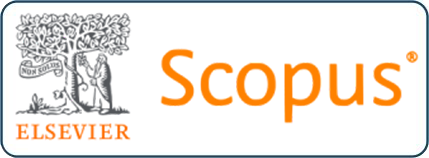Halal Awareness in Gastronomy Tourism: The Role of Fatwa in Local Dishes of Malaysia and Indonesia
DOI:
https://doi.org/10.33102/jfatwa.vol30no2.609Keywords:
: Islamic law, halal regulations, local gastronomy, tourism, Malaysia, Indonesia.Abstract
Islamic law plays a significant role in halal gastronomy tourism by developing halal food products and services to cater to Muslim tourists. However, some gastronomy products in Malaysia and Indonesia are not permissible as the ingredients come from prohibited substances, even though the Muslim population is the highest in both countries. This study aims to raise awareness about local dishes in Malaysia and Indonesia within Islamic law in halal gastronomy tourism, helping Muslim tourists avoid consuming prohibited foods. The study reviewed the literature approach, drawing on existing research on Islamic law, halal regulations, and local gastronomy in Malaysia and Indonesia. As a result, the comparison between Malaysia and Indonesia can be seen through how fatwa was issued and halal regulations. Regarding local gastronomy, the issues discussed are tapai, grasshoppers, and sago worms, as the fatwa stated that tapai and grasshoppers are permitted, while sago worms are prohibited. Besides, this study highlighted the names of the forbidden local foods, such as sinalau bakas, bak kut teh, tinaransay, and saksang, to raise awareness among Muslim tourists about local dishes. The halal business in Malaysia and Indonesia is expected to grow, particularly in halal gastronomy tourism, as both countries are popular destinations for Muslim tourists. Therefore, this study suggests that combining Islamic law and halal regulations can result in better halal gastronomic tourism that ensures a promising cultural food for Muslim tourists.
Downloads
References
Ab Ghani, A., & Ismail, M. S. (2010). Penentuan Piawaian Alkohol dalam Makanan yang Dibenarkan dari Perspektif Islam. In Journal of Fiqh (Issue 7).
Abdullah, M. A., & Abdul Ghani, M. A. (2021). Pengistilahan Malaysia Sebagai Negara Islam Rasmi: Satu Diskusi. 2(2).
Abdullah, M. A., Zakaria, Z., Buang, A. H., & Ismail, S. Z. (2021). Pensijilan Halal di Malaysia: Suatu Analisis Pensejarahan dan Perkembangannya. In Journal of Shariah Law Research (Vol. 6, Issue 2). https://www.hmetro.com.my/
Harimurti, Y., Fauzan, M., Purbasari, I., & Yulianingsih, I. (2020, December 23). The Role of Majelis Ulama Indonesia and Its Fatwas within The Indonesian Governance System. https://doi.org/10.4108/eai.26-9-2020.2302535
Hasyim, S., & Norshahril Saat. (2020). Indonesia’s Ministry of Religious Affairs under Joko Widodo.
Hayyun, D. F. (2019). Sertifikasi Halal di Indonesia: Sejarah, Perkembangan, dan Implementasi. In Journal of Halal Product and Research.
Jati, S., Hubeis, M., & Suprayitno, G. (2021). Perancangan Transformasi Institusi Penyelenggara dan Pengelola Sertifikasi Halal di Indonesia dengan Pendekatan Soft System Methodology: Studi Kasus di LPPOM MUI. Jurnal Aplikasi Bisnis Dan Manajemen. https://doi.org/10.17358/jabm.7.2.390
Lim, S. M., Thien, C. N., Toure, A. K., & Poh, B. K. (2022). Factors Influencing Acceptance of Grasshoppers and Other Insects as Food: A Comparison between Two Cities in Malaysia. Foods, 11(20). https://doi.org/10.3390/foods11203284
Mastercard-CrescentRating. (2023). Global Muslim Travel Index.
Mehmood, M. I., Chishti, S. A., & Mughal, M. J. (2015). Islamic concept of Fatwa, Practice of Fatwa in Malaysia and Pakistan: The Relevance of Malaysian Fatwa model for legal system of Pakistan. In International Research Journal of Social Sciences (Vol. 4, Issue 9). www.isca.in
Pauzi, N., Man, S., & Syed Jaafar, S. M. J. (2018). Analisis Perbandingan Fatwa Malaysia dan Indonesia: Kajian Terhadap Isu-Isu Halal yang Terpilih. 14(1). www.jfatwa.usim.edu.my
Saffinee, S. S., Aizat Jamaludin, M., & Halim, S. A. (2021). Potential and Challenges: Tourism and Stakeholders’ Perceptions towards Muslim Friendly Geotourism in Langkawi UGGp. International Journal of Geotourism Science and Development (IJGSD), 1, 75–080.
Samori, Z., Md Salleh, N. Z., & Khalid, M. M. (2016). Current trends on Halal tourism: Cases on selected Asian countries. In Tourism Management Perspectives (Vol. 19, pp. 131–136). Elsevier. https://doi.org/10.1016/j.tmp.2015.12.011
Sari, D. P., & Chodijah, S. (2021). Takhrij and Syarah Hadith of Chemistry: Nabidz and Chemical Kinetics. International Journal on Orange Technology, 3(8), 24–27. https://journals.researchparks.org/index.php/IJOT
Siddiqui, S. A., Ghisletta, M., Yunusa, B. M., Jiddum, F. A., Saraswati, Y. R., Fernando, I., Nagdalian, A. A., Gvozdenko, A. A., Shah, M. A., Lorenzo, J. M., & Dar, B. N. (2023). Grasshoppers and locusts as human foods – a comprehensive review. In Journal of Insects as Food and Feed (Vol. 9, Issue 10, pp. 1247–1264). Brill Wageningen Academic. https://doi.org/10.3920/JIFF2023.0010
Som, H. M., Nordin, N. M., & Ghazali, A. J. (2020). Local Heritage Food as A Significant Factor in Malaysia Gastronomy Tourism. In Journal of Tourism, Hospitality & Culinary Arts (Vol. 12, Issue 1).
State of the Global Islamic Economy Report. (2023).
Susilo, A., & Ulfah, M. (2024). The utilization of sago worm (Rhynchophorus ferrugineus) as a functional food of animal origin. 020004. https://doi.org/10.1063/5.0202009
Tohe, A., Kholisin, K., Dariyadi, M. W., & Omar, N. (2021). Mapping Out Halal Certification in Indonesia and Malaysia: Challenges, Opportunities, and Comparative Advantage. Nusantara Halal Journal (Halal Awareness, Opinion, Research, and Initiative), 2(1), 33–45. https://doi.org/10.17977/um060.2021v2p033-045
ul-Haque, S. N. S. M., & Mueedin, N. (2021). Fermentation of Tapai and Alcohol Content Released From Tapai. IOP Conference Series: Materials Science and Engineering, 1053(1), 012050. https://doi.org/10.1088/1757-899x/1053/1/012050
Yew, K. L., & L Kok, V. S. (2012). Exotic Food Anaphylaxis and the Broken Heart: Sago Worm and Takotsubo Cardiomyopathy. https://www.researchgate.net/publication/239525115
Downloads
Published
Issue
Section
License
Copyright (c) 2024 Siti Syahirah Saffinee

This work is licensed under a Creative Commons Attribution 4.0 International License.
The copyright of this article will be vested to author(s) and granted the journal right of first publication with the work simultaneously licensed under the Creative Commons Attribution 4.0 International (CC BY 4.0) license, unless otherwise stated.















